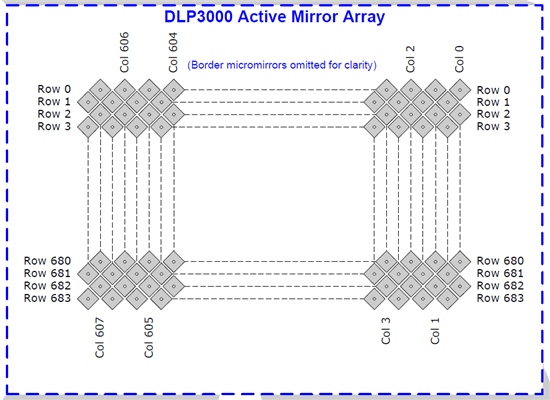There was a post sometime back by Divya where she described the mirror geometry. In the explanation it seemed that if I ran the projector in its native resolution then the image processing algorithms would be off and there would be a 1 to 1 mapping of pixels from the computer to the LCr.
I understand that the coordinate system on the LCr means that the x pixel spacing is twice the physical distance ans y pixel spacing. By doing the transform, if I created an array in matlab that had a line described by the following coordinates: (1,1); (1,2); (2,1);(2,3);(3,4);(3,5) etc. Then I end up with a line that goes up two and then one over. This pixel mapping in the array when converted into an image should map exactly to the diagonal direction on the mirror array.
Yet when I do this I end up with an image on the lightcrafter that appears as an approximation of "two up and one over". If the coordinates of my image are written in LCr reference why isn't this line travelling along the diagonal axis of the mirror array?
*Some details about my use. I am using the light crafter image to stimulate retinae ( I am a biologist). We minify the image coming out of the projector such that the diamond pixels are now 3um on the diagonal. I can observe the pixel array under my microscope, which is how I know that the line is not what I expect. I generate frames of a movie using the psychophysics toolbox in MATLAB.
I have these questions:
1) Are the algorithims off in HDMI video mode? If no then that explains why the line is not what I expect. If yes, then do I have the coordinate system wrong?
2) What mode allows me to display images on the lightcrafter with the image processing algos completely off? Does this mode (Perhaps pattern display) work the same way as the video mode? For example, is the lightcrafter acting like a second monitor on my video card?
3) Somewhat unrelated to the above but, can I get the output trigger from the LCr on Pattern Display mode? If not then which mode?
Thanks
Arjun




